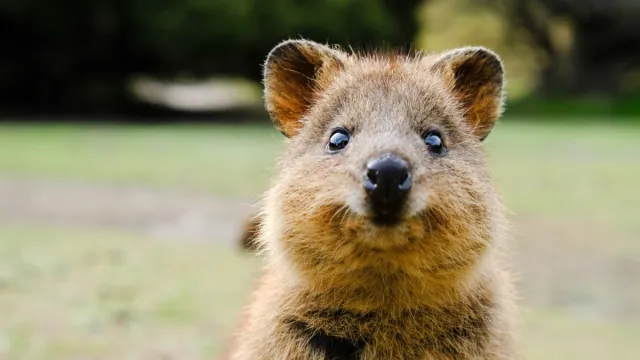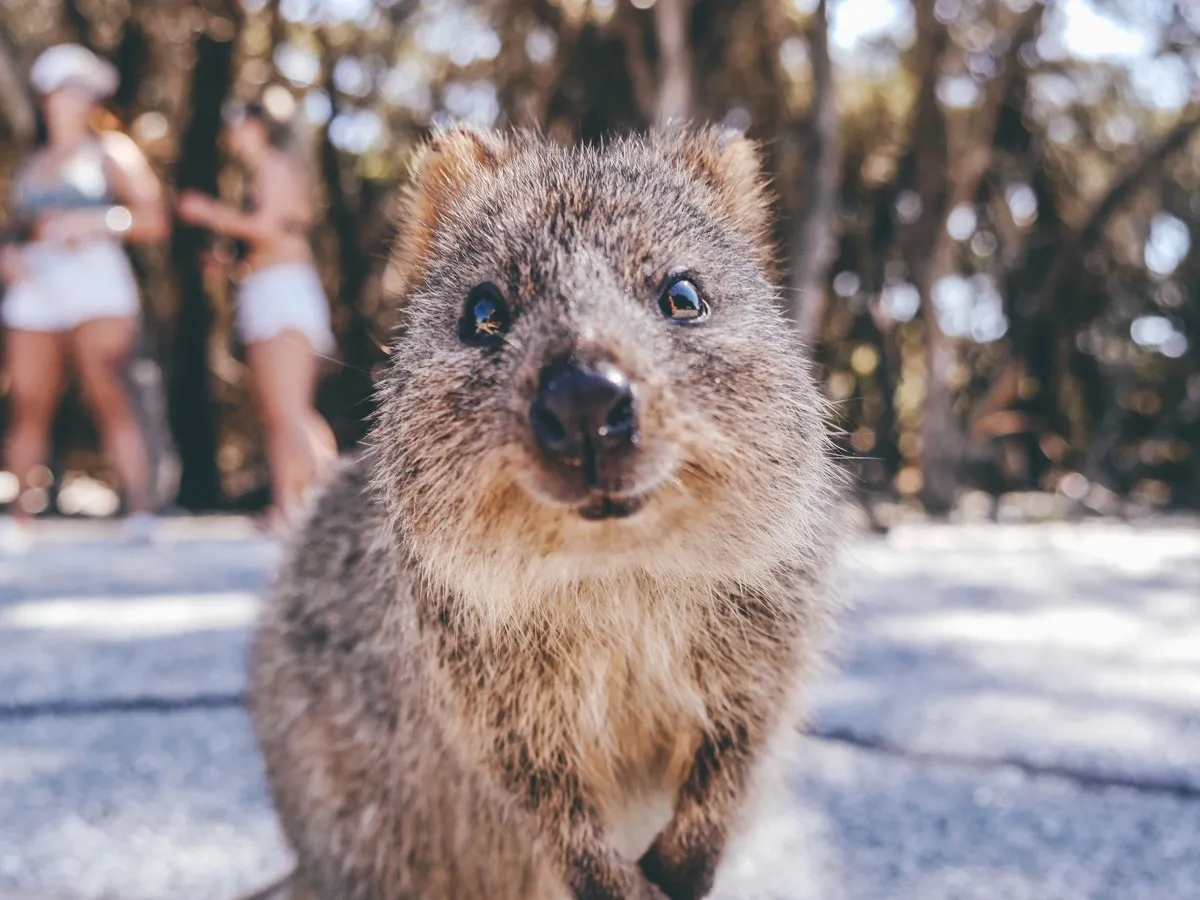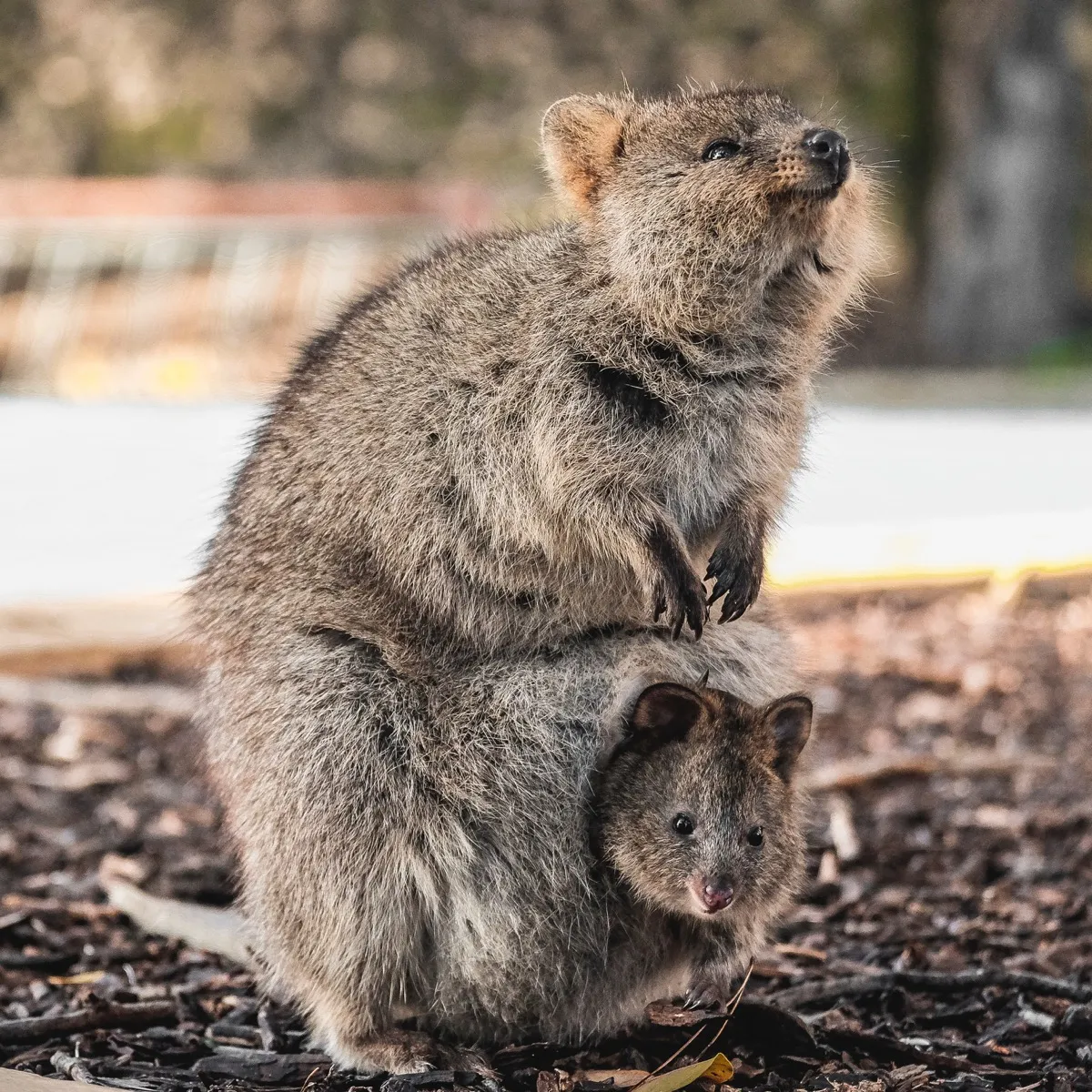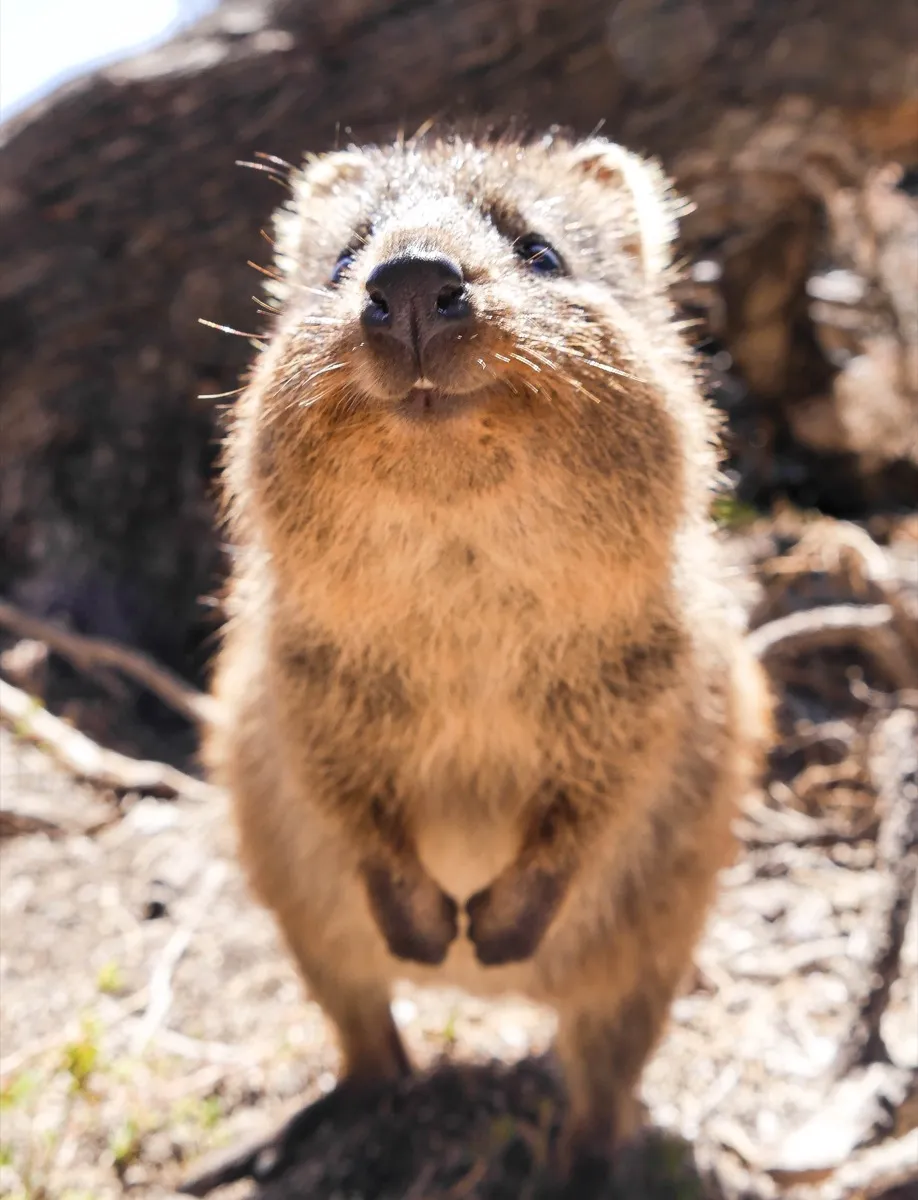What Is a Quokka? 15 Facts About the “Happiest” Creature on Earth

When National Geographic deems an animal “the happiest on earth,” you take note. And sure enough, the smiling, teddy-bear sized marsupials known as quokkas get that name for good reason. While you can’t have a quokka as a pet, you can find plenty of swoon-worthy photos of them online, or even take a trip to visit them on their native island (which they’ve practically infested with cuteness). Sure, this adorable species may be fairly unknown to most of the world—but, frankly speaking, it deserves all the attention.
So, what exactly is a quokka? And what makes them so irresistibly cute? And why in the world do people love taking “quokka selfies” so much?! Well, wonder no longer. We’ve rounded up 15 must-know facts about these little-known creatures. Here’s everything you need to know about these fantastic beasts (including where to find them).
What is a quokka?
Quokkas are small wallabies (think: the same family as kangaroos, except these little guys only grow to be about the size of a domestic cat) with short tails, short faces, and round ears on the top of their head. But the most notable attribute about a quokka is its face: All quokkas appear to be perpetually smiling, which is what earned them that sweet “happiest animal on earth” moniker. They were originally discovered by Dutch explorers in the 17th century, who mistook them for large rats, deeming their native island “Rotte nest.” (Translated, that means “rat’s nest.”)
Where does the quokka live?
Quokkas live in Australia, but even if you’re a native of the region, you won’t just find one in your backyard. These little guys are native to southwestern Australia (off the coast of Perth), with the biggest population residing on Rottnest Island.
How do you pronounce quokka?
Quokkas get their name from the Aboriginal people that lived in the King George Sound area of southwestern Australia when they were first discovered. The name is pronounced “kwaa-ka.”

Can you have a quokka as a pet?
Unfortunately, quokkas are a protected species in Australia, and, per the Rottnest Island Authority Act of 1987, can’t be kept as pets. You’re also not allowed to take quokkas out of Australia to be your pet elsewhere, meaning you’re most likely to spot one on their native island.
How did quokkas become popular?
Thanks to that never-ending smile, quokkas are intensely photogenic—so much so, that they became known on a worldwide scale after a man posted a “quokka selfie” with the smiling, furry critter that went viral, and put them on the map.
“Quokka Selfies” – Meet the World’s happiest Animal on Instagram! http://t.co/Fxzy2TNRWX pic.twitter.com/IcU9dBTB55
— Diana Peck (@noveltydesignco) March 6, 2015
What does a quokka eat?
Quokkas like to nibble on leaves, shrubs, grasses, and plants, which happen to be found in abundance on Rottnest, as well as mainland Australia. True herbivores, they especially love to munch on swamp peppermint. For leaner times, they store fat in their tales.
Can I pet a quokka?
No; it’s actually illegal to pet a quokka. These creatures need to stay in the wild—something that Australian authorities take seriously. Not only is it illegal to reach out and pet these cuties, but you’ll also be slapped with a cool $300 fine for doing so.
Quokkas can have anywhere from 15 to 17 babies.
These warm-blooded little guys only give birth to one baby at a time, but baby quokkas mature quickly, so full-grown quokkas can give birth twice per year. In a 10-year lifespan (that’s the average), they might produce anywhere from 15 to 17 babies.
Like kangaroos, they carry their babies in their pouch.
The word “marsupial” comes from the Latin marsupium, which means “abdominal pouch.” Just like kangaroos, wombats, wallabies, possums (or, if we’re being proper, opossums), koalas, and other marsupials, quokkas have these, too.

A baby quokka is called a “joey.”
Another similarity to their fellow Australian-natives, kangaroos and koalas, baby quokkas are called “joeys.” Awww!
Quokkas sometimes throw their babies for protection.
When threatened, adult quokkas are known to sometimes throw their babies out of their pouches to serve as a distraction, and allow then ample time to get away from the threat.
They like to hang out in packs.
Where there’s one quokka, there’s likely more. These guys are social with their kind, and tend to be peaceful among one another. Unlike some other mammals, they do not typically fight over food or mates.
Quokkas can swim.
Though it’s not their first choice, quokkas are more than capable in the water. Their main habitat is on land, though, and they tend to spend most of their time in trees and shrubs. Plus, their native island can go months without rainfall, so they’re used to dry land.

Quokkas are protected by the World Wildlife Foundation.
The World Wildlife Foundation is focused on maintaining their current habitat and controlling predators.
Sadly, quokkas are at risk of extinction.
Quokkas are considered vulnerable to extinction by the International Union for Conservation of Nature. The species has lost 50 percent of its habitat in the past 200 years on the mainland, according to a 2014 study led by John Woinarski of Australia’s Commonwealth Scientific and Industrial Research Organization, or CSIRO.
To discover more amazing secrets about living your best life, click here to follow us on Instagram!